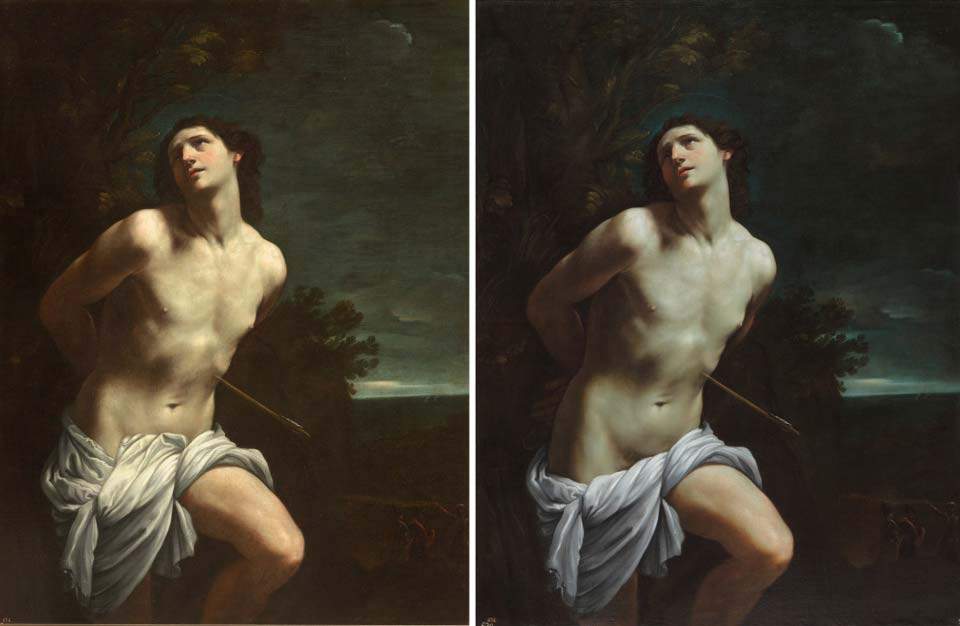Important revelation from the restoration of Guido Reni ’s Saint Sebastian (Bologna, 1575 - 1642), which is part of the collections of the Prado Museum in Madrid. The work has in fact been stripped of the large repainting that censored the saint’s pubis: the work will now go on display in the major exhibition that the Prado will devote to Guido Reni from March 28 to July 9, curated by David García Cueto, director of the Department of Italian and French Painting until 1800.
The restoration work restored the Saint Sebastian to its original state, to the image that the Bolognese artist had produced to great acclaim and varying the image of the Saint Sebastian painted some time earlier and now at the Palazzo Rosso museum in Genoa, the prototype of the work preserved in Spain.
The removal of the repainting during the restoration work, which was possible thanks to the sponsorship of the Fundación Iberdrola España, revealed not only that part of the saint’s body that had been censored, but also other hidden original elements. The cleaning of the painting has revealed even more vividly the definition of the anatomy bathed in moonlight that, starting with the saint’s face, shapes each of the muscles of the body to create a figure of extreme beauty and perfection.
The singularity that this work presented and that motivated its restoration, under the tutelage of the support offered each year by the Fundación Iberdrola España, sponsor of the Restoration Program of the Museo Nacional del Prado, was precisely the modest repainting that had greatly expanded the loincloth that covered part of the saint’s body: his nudity was in fact considered excessive and unseemly, so it was covered later, perhaps at the request of Elisabetta Farnese, consort of King Philip V of Spain. In fact, the work, created between 1617 and 1619, first appears in Spain in the inventory of the queen consort’s collection in the Palace of the Granja de San Ildefonso. The painting shows the beginning of Saint Sebastian’s martyrdom, the moment when the saint commends himself to God. The choice of this moment also allows Reni to study the human body in the tension of a forced position that, despite the effort, nevertheless manages to convey the Bolognese painter’s characteristic classicism.
The extraordinary recovery of that part of the saint’s body that had remained hidden is not the only result of the restoration: the removal of other repainting in different areas of the canvas have provided pleasant surprises and led to the discovery of some original elements such as the saint’s hand that appears on the left in the half-light and the rope with which Saint Sebastian’s two hands are tied to the tree. The appointment for those who want to see the work restored to its original appearance is therefore from March 28 at the Prado.
Pictured: on the left the work before restoration, on the right after.
 |
| Madrid, restoration of Guido Reni's St. Sebastian removes pubic censorship |
Warning: the translation into English of the original Italian article was created using automatic tools. We undertake to review all articles, but we do not guarantee the total absence of inaccuracies in the translation due to the program. You can find the original by clicking on the ITA button. If you find any mistake,please contact us.